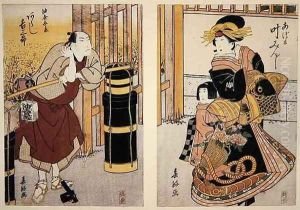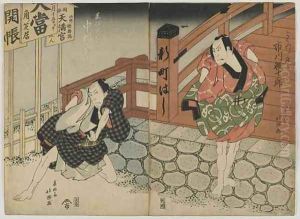Shunkosai Hokushu Paintings
Shunkosai Hokushu was a distinguished ukiyo-e artist, active during the late Edo period in Japan. Although the precise dates of his birth and death are not firmly established, his artistic career is generally documented to span from around 1808 until his death in 1832. Hokushu is primarily celebrated for his significant contributions to the kabuki theater print genre, a key area of focus within the ukiyo-e tradition. His works are renowned for their dynamic depiction of kabuki actors, capturing the vibrancy and emotion of theater performances with remarkable detail and expressiveness.
Hokushu was a contemporary of several notable ukiyo-e artists and was considered part of the Osaka school, a group distinguished by its focus on kabuki actor prints and related subjects. This school was characterized by its more realistic and individualized portrayals of actors compared to the stylized approaches often found in Edo (present-day Tokyo) prints. Hokushu's artistry is marked by his adept use of color and composition, as well as his ability to convey the personality and stature of his subjects, making his prints highly sought after by collectors and enthusiasts of Japanese woodblock printing.
Throughout his career, Hokushu contributed to the evolution of the Osaka school's style, influencing subsequent generations of artists. His legacy is reflected in the enduring popularity of his works and his impact on the development of the kabuki theater print genre. Today, Shunkosai Hokushu's prints are preserved in numerous collections worldwide, serving as valuable resources for understanding the cultural and artistic dynamics of the late Edo period in Japan.

